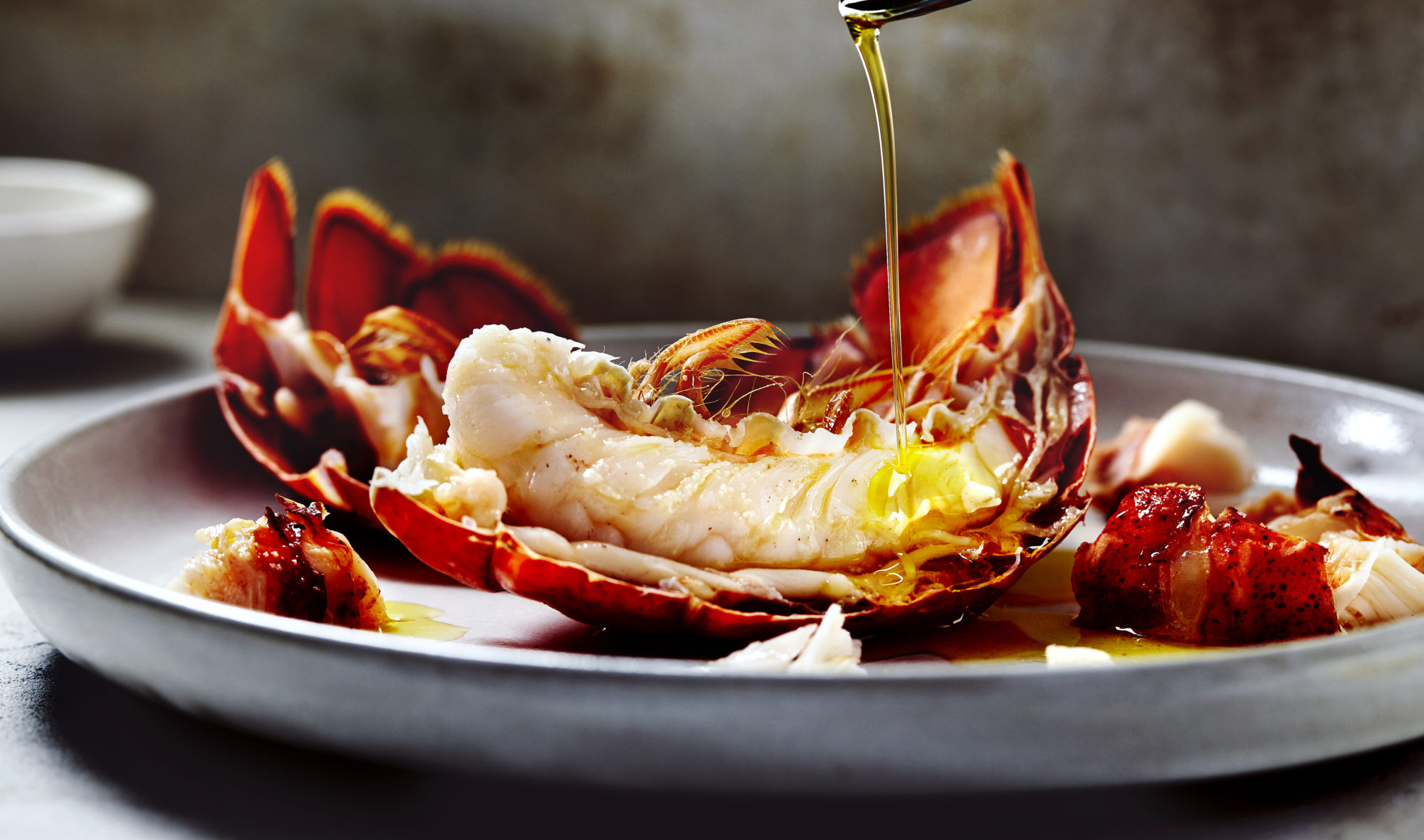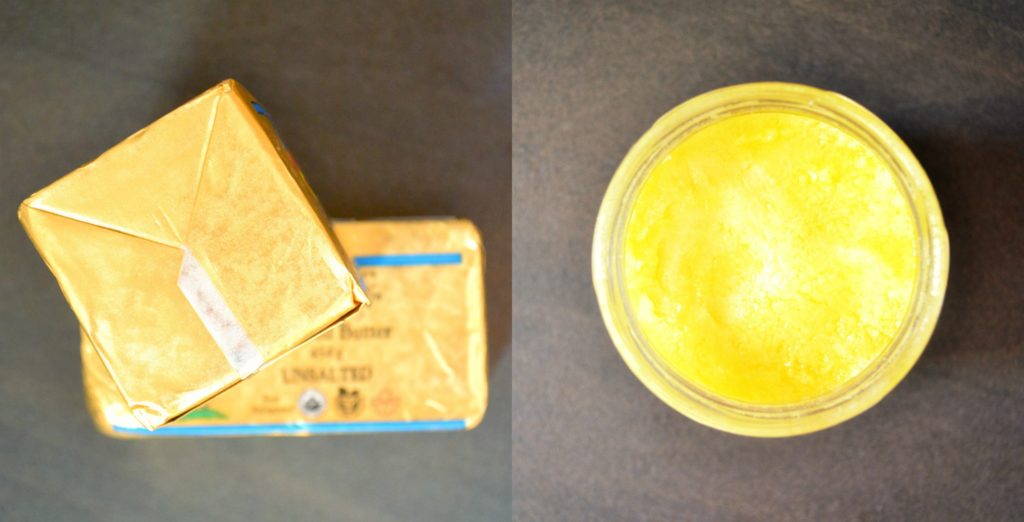
💥 SAVE 54% on the PN Nutrition Certification + Coaching Career Kickstarter Course! Ends Friday.

💥 SAVE 54% on the PN Nutrition Certification + Coaching Career Kickstarter Course!

Ghee is a type of clarified butter that is ubiquitous in Indian and Pakistani cuisine, although many cultures have their own version of clarified butter, under a variety of names. Because the milk solids have been removed, ghee is shelf-stable, hypoallergenic, and has a very high smoke point. Ghee is rich and intensely buttery tasting, and is pale to mid yellow in color. Darker versions signify higher vitamin A content, and usually come from grass-fed cows. Ghee is a nutritious form of animal fat, and is a good source of vitamin A, vitamin E, and vitamin K.
You can think of ghee as caramelized butter nectar.
Based on that description alone, you are likely now compelled to get a jar of this rich, flavorful, golden animal fat.
Ghee is ubiquitous in Indian and Pakistani cuisine, although many cultures have their own version of clarified butter. Variations of clarified butter have been used for generations, if not centuries, across Europe, the Middle East, Asia, and Africa. Depending on where you are, clarified butter may be called ghee, boiled butter, drawn butter, butterschmaltz, smen, niter kibbeh, or daigo.
There are many different cultural varieties of clarified butter, each with their own recipe or method of preparation. Some versions are cultured, some are spiced, and others are rendered from whole milk instead of butter. Cow’s dairy is most commonly used, although water buffalo or goat dairy is also used in certain regions.
Generally speaking, clarified butter is usually made by simmering butter until the milk solids, which include milk proteins (like whey and casein) and milk sugars (like lactose) separate from the fat. These solids are then strained out, and the golden liquid that remains, which is pure butterfat, is clarified butter, or ghee.
Because the milk solids have been removed, ghee is different from butter in a few important ways:
India is by far the world’s largest consumer and producer of ghee, where it is used as a food, a cosmetic ingredient, a medicine, and as part of religious rituals.
Ghee is typically sold in jars and is stored at room temperature. It is a soft, slightly granular, spreadable semi-solid fat that ranges in color depending on the type of animal it came from and the animal’s diet. Cow ghee ranges in color from pale to mid golden yellow, the darker versions usually coming from the vitamin A rich diet of grass-fed cows. Water buffalo and goat ghee are off-white.
Ghee is rich and intensely buttery tasting. If it has been cultured, it will have a mild yogurty flavor. Depending on how long it was simmered, ghee may have a mild or pronounced caramelized nuttiness.
One tablespoon of ghee (about 13g) has 112 calories, 12.7g of fat, and no significant amounts of protein, carbohydrates, fiber, or sugar. Ghee is a good source of vitamin A, vitamin E, and vitamin K, especially when from grass-fed cows.
Because ghee is an animal fat, it contains cholesterol.
Ghee can be found in good quality health food stores or Indian grocery stores.
The most nutritious ghee will likely come from grass-fed cows. Because manufacturers know that this is a selling feature, if their ghee comes from grass-fed cows, it will say so explicitly on the label. If choosing animal products that are free of antibiotics and growth hormones is important to you, choose a product that is certified organic.
As always, check the ingredients. Ghee, unless it is cultured or spiced, should only contain one ingredient: butter. If it is cultured, bacterial cultures may be listed, and if spiced, whole spices will be listed.
Ghee, after opening (or making it yourself), is shelf-stable for about one to three months, although it may last much longer depending on the brand and how it was made. If buying packaged ghee, follow the label guidelines. If making ghee at home, play it safe and discard or refrigerate after a month.
Refrigeration can extend the life of ghee to up to 12 months. However, when cooled, ghee becomes hard and difficult to spread.
Ghee can be used directly from the jar and spread on toast, used in baking,or cooking, blended into smoothies or warm beverages, or simply eaten straight off the spoon.

Rich and intensely buttery tasting, ghee is a nutritious fat that can be used anywhere you’d use butter or oil: Stir-frys, baked goods, porridge, roasted vegetables, etc. It has a high smoke point so is suitable for high-heat cooking.
Prep Time: 5 minutes Cook Time: 25 minutes Yield: 500g of butter will fill a 16oz mason jar
Before you begin, you’ll need the following equipment:
-Saucepan
-Spoon
-Wire mesh strainer
-Cheesecloth or paper towel
-Bowl
-Funnel (optional)
-16oz mason jar
Once you’ve gathered the above equipment, unwrap your butter and place it in a saucepan. Cook over medium heat for about 10-15 minutes, or until a thick foam forms. Give the butter a quick stir, and allow the liquid to simmer (reduce the heat if needed).
Continue to simmer the liquid for another 10 minutes. During this time, the foam will slowly break up, and may foam up again. When you stir the liquid, you should be able to see solid matter forming at the bottom of the saucepan. These are the milk proteins that have separated from the fat. The liquid should be golden yellow and smell slightly caramelized and toasty.
At this point, you can turn the heat off and prepare your equipment to strain your ghee.
First, using a spoon, skim the excess foam off the top of the liquid, and discard.
Then, line a wire mesh strainer with a layer of paper towel or a few layers of cheesecloth, and place the strainer over a bowl.
Being very careful not to splash any liquid on yourself, pour the liquid over the lined strainer into the bowl. The paper towel / cheesecloth should catch the solid matter and residual foam, and there will likely be some more solid matter stuck to the bottom of the saucepan. The liquid in the bowl should be clear and golden yellow. If it’s foamy or speckled / clouded with particles, strain it again, using fresh paper towel or cheesecloth.
Once your ghee is strained, pour it into one or two clean glass jars. Allow to cool, then seal them tightly and store in a cool, dry cupboard or in the fridge. Use within a month if storing at room temperature, or within a year if storing in the fridge.
*This recipe can be easily doubled or tripled (or more!) if you prefer making ghee in larger batches. No matter the quantity, the same method applies. If it’s your first time making ghee, start with one batch until you get the hang of it.
Precision Nutrition’s Encyclopedia of Food expands every single month as we highlight new foods and showcase beautiful food photography. If you’d like to stay up to date, simply click this link. From there, we’ll send you a FREE copy of our recipe book. We’ll also let you know when new and delicious foods are added to the site.
Ghee is a type of clarified butter that is ubiquitous in Indian and Pakistani cuisine, although many cultures have their own version of clarified butter, under a variety of names. Because the milk solids have been removed, ghee is shelf-stable, hypoallergenic, and has a very high smoke point. Ghee is rich and intensely buttery tasting, and is pale to mid yellow in color. Darker versions signify higher vitamin A content, and usually come from grass-fed cows. Ghee is a nutritious form of animal fat, and is a good source of vitamin A, vitamin E, and vitamin K.